The Ultimate Smart Goal Setting Template To Achieve Your Dreams
The Ultimate Smart Goal Setting Template For Achieving Your Dreams
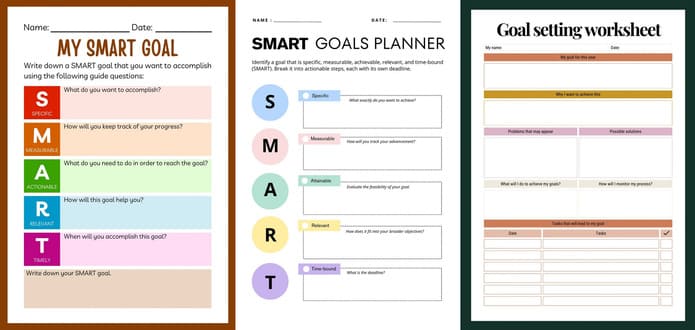
Welcome dreamers and goal-getters! Are you ready to turn your dreams into a reality? We’re here to unveil the ultimate smart goal setting template that will propel you towards success like never before.
With this comprehensive guide you can start your own business, mastering a new skill, or achieving personal growth. The guide will equip you with the tools and strategies needed to transform your aspirations into achievable milestones.
Say goodbye to vague resolutions and hello to an actionable roadmap that guarantees results. Get ready to unleash your potential and join us on this exhilarating journey towards making all your dreams come true!
Click here for my #1 recommendation to earn money online while working from home
Introduction To The Concept Of Smart Goal Setting
Goal setting is an essential aspect of achieving success in any area of life, whether it be personal or professional.
However, simply setting goals without a proper plan can often lead to disappointment and failure. This is where the concept of SMART goal setting comes into play.
SMART is an acronym that stands for Specific, Measurable, Achievable, Relevant, and Time-bound. It was first introduced by George T. Doran in 1981 as a way to effectively set goals that are clear, realistic, and achievable.
Specific: The first element of SMART goal setting emphasizes the importance of being specific about what you want to achieve.
Vague or general goals like “I want to lose weight” or “I want to save money” are not effective because they lack direction and clarity. Instead, make your goals specific by answering the questions who, what, when, where and why.
For example, “I want to lose 10 pounds in 3 months by going to the gym three times a week.”
Measurable: A measurable goal is one that has quantifiable criteria for tracking progress towards its achievement. By having measurable goals, you are able to objectively determine if you have achieved them or not.
Using our earlier example of weight loss – losing 10 pounds in 3 months is a measurable goal because it has a specific target (10 pounds) and a time frame (3 months).
Achievable: Setting achievable goals means considering your current resources and limitations and setting goals that you have the ability to reach. It is important to challenge yourself, but not to the point where your goals become unattainable.
For instance, setting a goal to lose 50 pounds in 3 months may not be achievable for most people. Losing 10 pounds each month is a more realistic and attainable goal.
Relevant: Your goals should align with your overall objectives and be relevant to your life or work.
Setting a goal that is not relevant or meaningful to you will likely result in lack of motivation and ultimately failure. Make sure your goals are aligned with your values and priorities.
Time-bound: The final element of SMART goal setting emphasizes the importance of setting a specific time frame for achieving your goals.
Having a deadline creates a sense of urgency and helps keep you focused on making progress towards your goal. Without a deadline, it is easy to procrastinate and lose sight of your goal.
In conclusion, SMART goal setting is an effective approach for creating clear, realistic, and achievable goals.
By following these five elements when setting your goals, you are more likely to achieve success in whatever area you are striving for.
Remember to make your goals Specific, Measurable, Achievable, Relevant, and Time-bound to increase your chances of reaching them.
Understanding The Components Of A Smart Goal (Specific, Measurable, Achievable, Relevant, Time-Bound)
Setting goals is an important step in achieving success and realizing your dreams. However, not all goals are created equal.
To truly make progress and turn your dreams into reality, you need to set SMART goals. SMART stands for Specific, Measurable, Achievable, Relevant, and Time-Bound.
In this section, we will delve deeper into each component of a SMART goal and understand why it is crucial for effective goal setting.
Specific: The first component of a SMART goal is being specific. This means that your goal should be clear and well-defined. It should answer the questions of who, what, when, where, why and how.
Vague or general goals often lack focus and can be overwhelming to achieve. On the other hand, specific goals provide direction and motivation as they give you a clear understanding of what exactly you want to achieve.
For example, instead of setting a generic goal like “I want to lose weight”, a specific goal would be “I want to lose 10 pounds in 3 months by following a healthy diet and exercising four times a week”.
This clearly defines the desired outcome (losing 10 pounds), the timeline (3 months), the method (healthy diet and exercise) and makes it easier to track progress.
Measurable: A SMART goal must also be measurable – there should be tangible criteria for measuring progress towards achieving your goal.
When you have measurable targets in place, it becomes easier to track your progress and stay motivated.
Additionally, having measurable goals allows you to adjust your strategies if you are not making satisfactory progress.
Using the earlier example, losing 10 pounds in 3 months is a measurable goal as it has a specific target (10 pounds) and a timeline (3 months).
You can easily track your progress by weighing yourself regularly and seeing how close you are to your goal.
Achievable: An achievable goal is one that is within your capabilities and resources. It is essential to set realistic goals that you have the skills, knowledge, and resources to achieve.
Setting unrealistic or overly ambitious goals can lead to frustration and demotivation if you are unable to reach them.
However, setting achievable goals challenges you enough to push yourself out of your comfort zone and ultimately leads to growth and success.
In our previous example, losing 10 pounds in 3 months may be achievable for someone who is generally healthy and has experience with dieting and exercising.
However, it may not be achievable for someone with health issues or who has never tried dieting before. It is important to assess your own capabilities before setting an achievable goal.
Relevant: The relevance of a goal refers to its alignment with your overall objectives and values. A relevant goal should be meaningful and significant to you.
It should also fit into the bigger picture of what you want to achieve in your personal or professional life. When your goals are relevant, it becomes easier to stay motivated and focused on achieving them.
For instance, if your overall objective is to improve your physical health, then losing 10 pounds through healthy eating and exercise is a relevant goal.
However, if your focus is on improving your mental health, then a different goal may be more relevant, such as reducing stress levels through meditation or therapy.
Time-Bound: The final component of a SMART goal is being time-bound. This means setting a specific timeline for when you want to achieve your goal.
Without a deadline, there is no sense of urgency or accountability, which can lead to procrastination or lack of motivation. When you have a specific time frame in place, it helps you stay committed to achieving your goal within that time.
In our example, the timeline of 3 months provides a sense of urgency and accountability for achieving the desired weight loss. It also allows for regular check-ins and adjustments to stay on track.
In conclusion, setting SMART goals involves ensuring that each component works together cohesively. Having specific, measurable, achievable, relevant and time-bound goals increases the chances of successfully achieving them.
So next time you set a goal, make sure it is SMART!
Click here for my #1 recommendation to earn money online while working from home
Why Is Goal Setting Important For Achieving Your Dreams?
Goal setting is an essential aspect of achieving your dreams and reaching your full potential.
It allows you to have a clear vision of what you want to accomplish and create a roadmap for how to get there. Without setting goals, your dreams may remain just that – dreams.
Here are some reasons why goal setting is crucial for achieving your dreams:
1. Provides direction and focus: Setting specific and measurable goals gives you a sense of direction and helps you stay focused on what truly matters.
When you have a clear target in mind, it becomes easier to make decisions and take actions that align with your ultimate goal.
2. Motivates and inspires: Goals can be incredibly motivating, especially when they are aligned with your passions and aspirations.
They give you something concrete to work towards, making the journey towards achieving your dreams more exciting and fulfilling.
3. Breaks down big dreams into smaller, achievable steps: Oftentimes, our dreams can seem overwhelming or unattainable because we don’t know where to start or how to get there.
Goal setting breaks down these big dreams into smaller, actionable steps that are easier to manage, making them feel more attainable.
4. Encourages progress tracking: By setting specific goals with measurable outcomes, it becomes easier to track your progress along the way.
This not only helps keep you accountable but also provides a sense of accomplishment as you reach each milestone towards achieving your dream.
5. Helps identify obstacles and create solutions: As much as we would like everything to go smoothly on the journey towards our dreams, obstacles and challenges are bound to arise.
However, setting goals allows you to identify potential roadblocks and come up with solutions to overcome them.
6. Provides a sense of purpose and fulfillment: Working towards your dreams can bring a great sense of purpose and fulfillment into your life.
When you set goals that align with your passions and values, it creates a sense of meaning and satisfaction as you work towards achieving them.
In conclusion, goal setting is essential for achieving your dreams because it provides direction, motivation, progress tracking, problem-solving opportunities, and a sense of purpose.
Without setting clear goals, it can be challenging to make progress towards achieving your dreams. So take some time to determine what you truly want in life and set specific goals that will help you get there.
Step-By-Step Guide To Creating Your Own Smart Goal Template
Creating a personalized Smart Goal template is an effective way to stay organized and focused on achieving your dreams.
By following a step-by-step guide, you can create a customized template that caters specifically to your goals and helps you track your progress towards them.
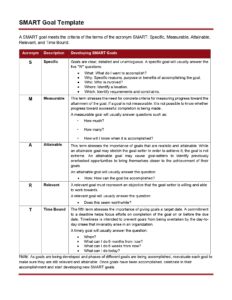
With these instructions, you can find out how to fill in the template properly, increasing your changes of success.
Project Manager
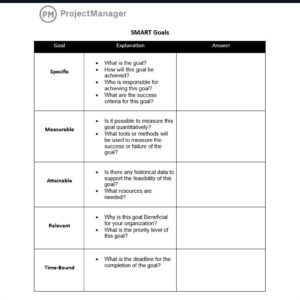
Smart Goal Setting Template
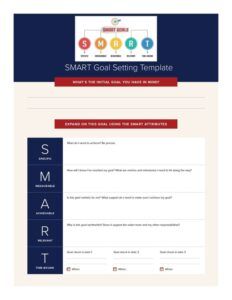
Smart Goal Setting Worksheet

If you want more, you can use the Smart goal setting worksheet with action plan where you can fill in more about your goals, see image on the right.
Click here for my #1 recommendation to earn money online while working from home
Here’s how you can create your own Smart Goal template:
Step 1: Define Your Goals
The first step in creating a Smart Goal template is to clearly define your goals. Take some time to think about what you want to achieve and why it is important to you.
Write down your goals in specific, measurable, achievable, realistic, and timely (SMART) terms. This will help give direction and purpose to your goal-setting process.
Step 2: Identify The Key Elements Of Your Goals
Now that you have defined your goals, the next step is to break them down into smaller, more manageable elements.
This could include tasks, deadlines, resources needed, or any other relevant factors that will help you achieve your goals. Identifying these key elements will make it easier for you to track progress and stay motivated.
Step 3: Choose A Template Format
There are various options available for creating Smart Goal templates such as spreadsheets or apps like Trello or Asana.
You can also choose a traditional pen-and-paper format if that works better for you. Select a format that suits your preference and needs.
Step 4: Create Sections And Sub-sections
Once you have chosen the format for your template, start creating sections based on the key elements of your goals.
For example, if one of your goals is to exercise more, you could have sections for workout plans, nutrition, and progress tracking.
Within each section, create sub-sections that break down the key elements even further. This will help you stay organized and focused on specific tasks.
Step 5: Add Relevant Tasks And Deadlines
Now it’s time to fill in your template with relevant tasks and deadlines for each goal.
These should be specific and actionable steps that will help you achieve your goals. Make sure to assign a realistic timeline for each task so that you stay on track.
Step 6: Include A Progress Tracker
To monitor your progress towards your goals, it’s important to include a progress tracker in your template. This could be a simple checklist or a visual representation such as a graph or chart.
Regularly updating this tracker will help you see how far you’ve come and motivate you to keep going.
Step 7: Customize According To Your Needs
You may find that certain sections or sub-sections are not applicable to all of your goals. Feel free to customize your template as needed to make it work best for you.
You could also add additional sections or elements based on your personal preferences.
Step 8: Review And Refine Regularly
Once your Smart Goal template is complete, make sure to regularly review and refine it. Keep track of your progress, adjust timelines if needed, and add new tasks as you go along.
This will help you stay accountable and on track towards achieving your goals.
Creating a personalized Smart Goal setting template may take some time and effort initially, but it will be well worth it in the long run.
With a clear and organized plan in place, you’ll be on your way to achieving your goals effectively and efficiently.
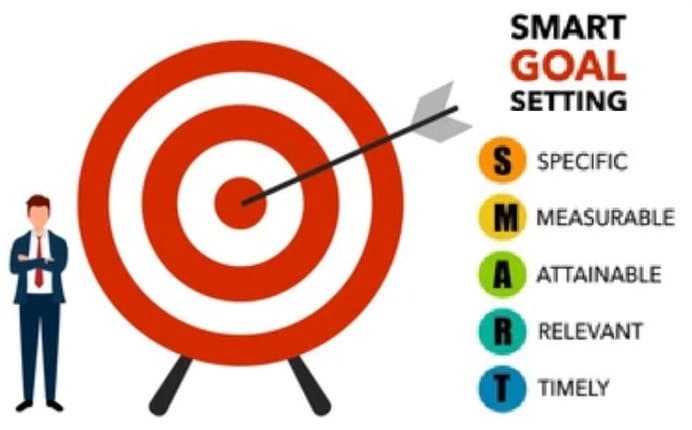
Tips For Staying Motivated And On Track With Your Goals
Staying motivated and on track with your goals is crucial for achieving success and reaching your dreams. However, it can be challenging to maintain that motivation and focus throughout the entire goal-setting process.
In this section, we will discuss some helpful tips for staying motivated and on track with your goals.
1. Set Realistic Goals:
One of the main reasons people lose motivation is because they set unrealistic or vague goals. Setting realistic goals helps you stay motivated as you can see progress along the way.
It’s essential to have a clear understanding of what you want to achieve and make sure it is attainable within a specific time frame.
2. Break Down Your Goals into Smaller Tasks:
Breaking down your goals into smaller, more manageable tasks can help you stay focused and motivated. It allows you to track your progress more effectively, making it easier to stay on track in achieving your ultimate goal.
3. Create a Plan:
Having a well-defined plan is essential for staying motivated towards achieving your goal. A plan not only helps you visualize how to reach your target but also serves as a roadmap when unexpected challenges arise.
Make sure to create an action plan with specific steps that need to be taken, deadlines, and potential obstacles so that you are prepared for any setbacks.
4. Celebrate Small Wins:
Celebrating small achievements along the way can significantly boost motivation levels. When working towards significant long-term goals, it’s easy to get discouraged if results aren’t seen immediately.
By acknowledging and celebrating small wins, you remind yourself of your progress and keep yourself motivated to continue working towards your goal.
5. Find an Accountability Partner:
Having someone to hold you accountable for your actions can be a great way to stay motivated and on track with your goals.
Share your goals with a friend, family member, or mentor who can provide support and help keep you accountable.
Knowing that someone else is counting on you can serve as a strong motivation to push through challenges and reach your goal.
6. Visualize Your Success:
Visualization is a powerful tool for staying motivated. Take some time each day to visualize yourself achieving your goal.
Imagine how it will feel and what it will look like when you have accomplished what you set out to do. This mental exercise can help keep you focused and motivated throughout the process.
7. Take Breaks:
Working non-stop towards a goal can lead to burnout and loss of motivation. It’s essential to take breaks throughout the process to recharge and reset your mind.
These breaks can help prevent exhaustion and allow for fresh perspectives when tackling challenges.
8. Be Flexible:
It’s crucial to remain flexible when working towards your goals as unexpected circumstances may arise that require adjustments to the plan.
Embrace change, adapt accordingly, and don’t let setbacks discourage you from continuing to work towards your goal.
9. Reflect on Your Why:
Remind yourself of why you set this goal in the first place. Reflecting on your motivations can reignite your passion and help you stay motivated when faced with challenges or distractions.
10. Stay Positive:
Positive thinking can go a long way in helping you stay motivated and on track with your goals. Using positive affirmations will keep yourself motivated and confident in achieving your goal.
Instead of focusing on past mistakes or setbacks, focus on what you have accomplished so far and the progress you have made.
Remember, staying motivated and on track with your goals takes dedication, commitment, and persistence. By implementing these tips, you can overcome obstacles and stay focused on achieving success in reaching your dreams.
Click here for my #1 recommendation to earn money online while working from home
Real-Life Examples Of Successful Goal Setting Using The Smart Goal Template
Goal setting is a crucial aspect of achieving success in any aspect of life. It allows us to be intentional and focused with our actions, and helps us stay motivated and on track towards reaching our desired outcomes.
However, setting goals without a clear plan or structure can often lead to disappointment and failure.
This is where the SMART goal template comes in – a powerful tool that enables individuals to set specific, measurable, achievable, relevant, and time-bound goals.
But how effective is this template in real-life scenarios? Let’s take a look at some successful examples of people who have used the SMART goal template to achieve their dreams.
1. Elon Musk – Founder of SpaceX and Tesla
Elon Musk is known for his ambitious goals and futuristic vision. His ultimate goal was to revolutionize the transportation industry by developing sustainable energy sources for vehicles.
To achieve this vision, he utilized the SMART goal template by setting specific targets for each step of the process.
Firstly, he set a specific goal of producing electric cars that were affordable for everyone. He then made it measurable by planning to produce 20,000 cars per month by 2020.
This was followed by making sure that his goals were achievable by investing heavily in research and development to improve battery technology.
Furthermore, his goals were highly relevant as they aligned with his overall vision for sustainable energy sources.
All his targets had a timeline attached to them which helped him stay accountable and continuously work towards achieving them.
Today, Tesla has become one of the most successful electric car companies in the world, and SpaceX is making significant strides in developing reusable rockets for space travel.
2. Serena Williams – Professional Tennis Player
Serena Williams has been dominating the tennis circuit for over two decades, winning 23 Grand Slam titles. She has always been vocal about her goals and how she uses the SMART goal template to achieve them.
One of her most recent goals was to return to professional tennis after giving birth to her daughter in September 2017. She set a specific goal of competing in the Australian Open in January 2018, which gave her four months to prepare.
She made it measurable by setting a target of regaining her pre-pregnancy fitness level and improving her game through daily training sessions.
Serena also ensured that her goals were achievable by working closely with her team of coaches, nutritionists, and trainers.
Her goals were highly relevant as they aligned with her passion for tennis and desire to continue competing at the highest level.
Lastly, she made sure to have a timeline for each goal, breaking down her training plan into weekly and monthly targets.
As a result, she successfully achieved her goal and made it to the finals of the Australian Open just four months after giving birth.
3. Bill Gates – Co-founder of Microsoft
Bill Gates is a household name, known for his success as the co-founder of Microsoft and for being one of the richest people in the world. However, his journey to success began with setting SMART goals.
When he dropped out of Harvard to start Microsoft, he had a clear goal in mind – to develop software for personal computers.
He made sure his goal was specific by focusing on creating an operating system that would be accessible to everyone.
He made it measurable by setting a target of selling 2400 copies of their first product, BASIC, which they achieved within a year.
Gates also ensured that his goals were achievable by constantly learning and adapting to new technologies and market demands.
His goals were highly relevant as they aligned with his passion for coding and computer science.
Lastly, he set a timeline for each goal, continuously pushing himself and his team to meet deadlines. This contributed significantly to the success of Microsoft as we know it today.
In conclusion, these real-life examples demonstrate the power of the SMART goal template in achieving success.
By setting specific, measurable, achievable, relevant, and time-bound goals, individuals can stay focused and motivated towards achieving their dreams and ambitions.
So why not try using this template for your own goals and see the difference it can make in your life?
Common Mistakes To Avoid When Setting Goals
Setting goals is an important step towards achieving our dreams and aspirations. However, the process of setting goals can be challenging and may lead to mistakes that can hinder our progress.
In this section, we will discuss some common mistakes to avoid when setting goals.
1. Setting Unrealistic Goals:
One of the most common mistakes people make when setting goals is being too ambitious or setting unrealistic expectations for themselves.
While it’s great to aim high, setting unattainable goals can be demotivating and discouraging in the long run. Instead, focus on setting SMART (specific, measurable, achievable, relevant, time-bound) goals that are within your reach.
2. Not Having a Clear Vision:
Another mistake to avoid when setting goals is not having a clear vision of what you want to achieve.
It’s essential to have a well-defined purpose or objective for each goal you set. This will help you stay focused and motivated throughout your journey.
3. Lack of Planning:
Setting a goal without a plan is like trying to navigate without a map – you’ll likely end up lost or take much longer to reach your destination.
It’s crucial to have a detailed plan with specific actions and timelines in place for each goal. This will help you stay organized and track your progress effectively.
4. Neglecting Prioritization:
Often, people make the mistake of trying to achieve multiple goals at once without prioritizing them properly.
This can lead to spreading oneself too thin and not making significant progress on any goal. It’s essential to prioritize your goals based on their importance and focus on one at a time.
5. Not Being Flexible:
While it’s crucial to have a plan in place, it’s also essential to be flexible and adapt to changes when needed.
Life is unpredictable, and things may not always go as planned. It’s essential to be open to making adjustments and tweaks to your goals as necessary.
6. Focusing Only on the Outcome:
Setting goals is not just about achieving an end result; it’s also about the journey towards that result. If you only focus on the outcome, you may miss out on valuable lessons and experiences along the way.
Enjoy and celebrate the small victories and progress you make towards your goal.
7. Comparing Yourself to Others:
It’s natural to look at others who have achieved similar goals as inspiration, but comparing yourself too much can be demotivating.
Everyone’s journey is different, so focus on your own progress and don’t let comparison discourage you from reaching your goals.
Click here for my #1 recommendation to earn money online while working from home
Conclusion
In conclusion, setting realistic and well-defined goals with a clear plan in place is crucial for success. Avoiding these common mistakes will help you stay focused, motivated, and make steady progress towards achieving your goals.
Remember to regularly review and reassess your goals to ensure they remain relevant and achievable, and don’t be afraid to make adjustments as needed.
With determination, focus, and the right tools, you can turn your dreams into reality.
Additional Resources And Tools For Effective Goal Setting
In addition to the SMART goal setting template, there are several other resources and tools that can help you effectively set and achieve your goals.
These resources can provide additional guidance, structure, and motivation to make your goal setting journey even more successful.
1. Goal Setting Worksheets: Printable or online goal setting worksheets can be a useful tool in organizing and clarifying your thoughts, ideas, and action steps for achieving your goals.
These worksheets typically include sections for defining your goal, creating a plan of action, identifying potential obstacles and solutions, tracking progress, and celebrating achievements.
2. Vision Boards: A vision board is a visual representation of your goals, dreams and desires. Creating a vision board can be a fun and creative way to stay motivated and focused on what you want to achieve.
You can use images, quotes, words or any other materials that inspire you to create a collage that represents your aspirations. Place it in a visible location as a daily reminder of what you are working towards.
3. Habit Tracking Apps: Habits play an important role in achieving our goals as they determine our daily actions and behaviors.
Habit tracking apps such as Habitica or Coach.me can help you establish new habits by providing reminders, accountability features and progress tracking tools.
4. Time Management Tools: Effective time management is crucial for reaching our goals within the desired time frame.
Tools like Google Calendar or Trello can help you schedule tasks related to your goals, set deadlines for yourself and track how much time you spend on each task.
5. Accountability Partners: Having someone to hold you accountable can be a powerful motivator in achieving your goals.
Consider finding an accountability partner, whether it’s a friend, family member or mentor, who can support and encourage you on your journey.
6. Journaling: Writing down your thoughts, feelings and progress towards your goals can help you gain clarity and stay motivated. You can use a traditional pen and paper journal or try journaling apps like Day One or Journey.
By utilizing some of these resources and tools in conjunction with the SMART goal setting template, you can increase your chances of success in reaching your goals.


